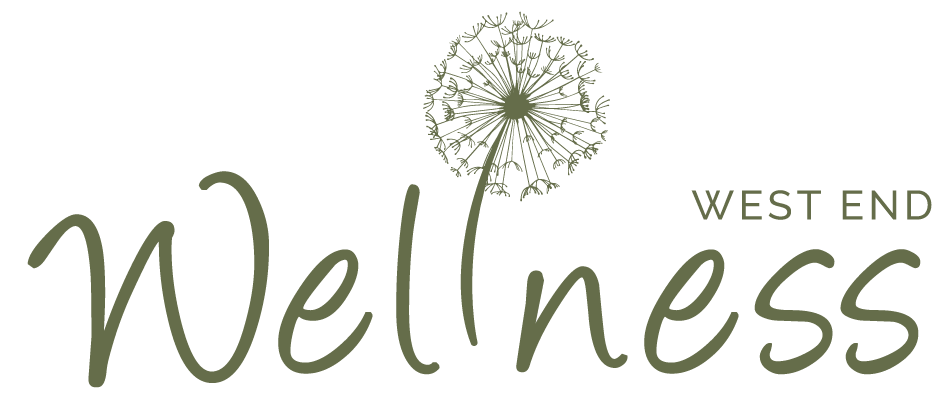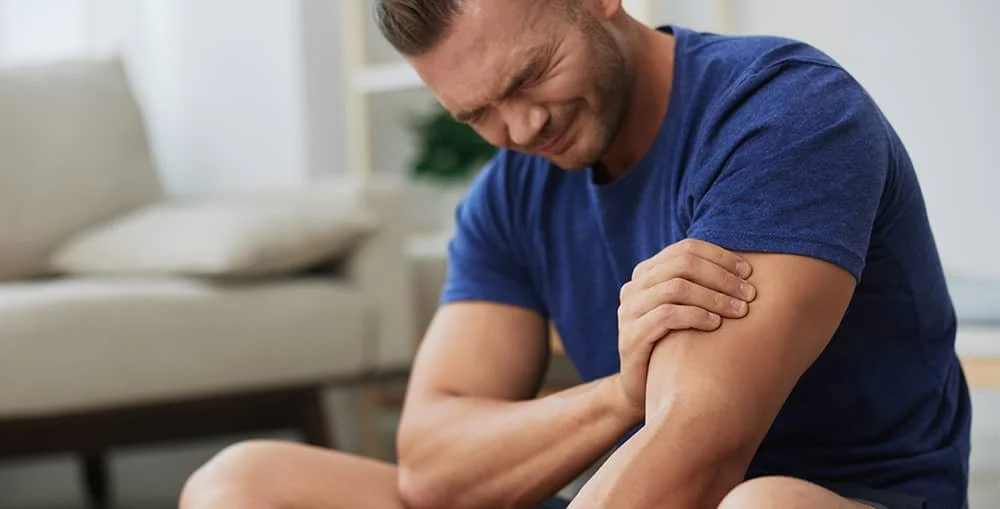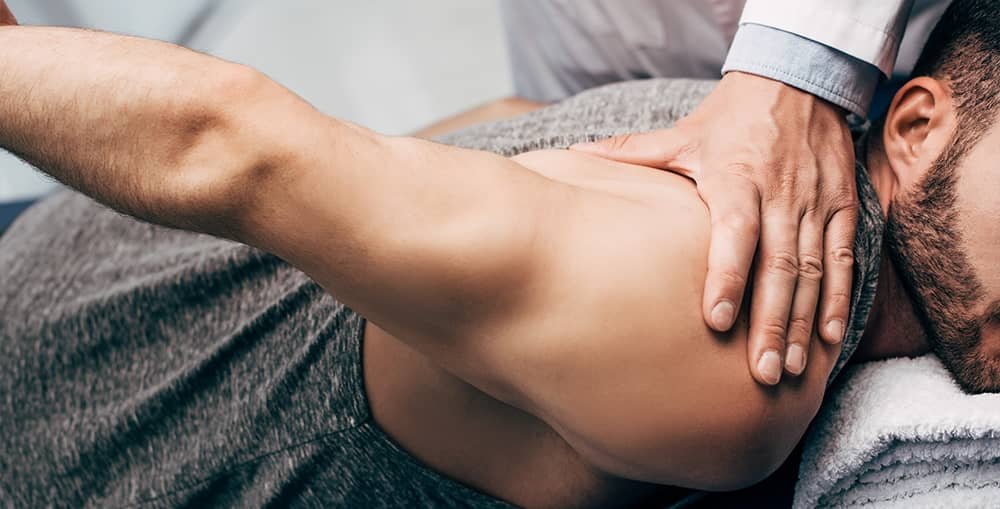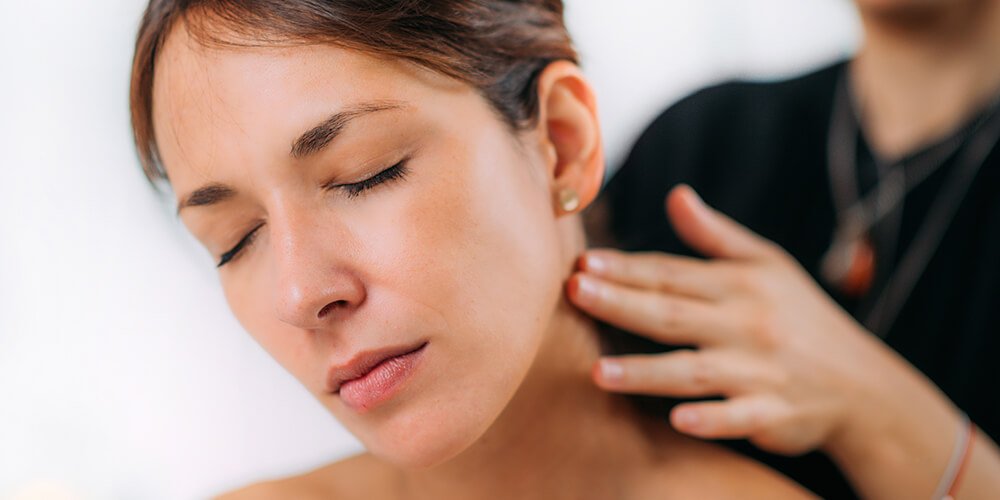Transform Your Recovery: Best Massage for Inflammation
Table of Contents Show
Quick Summary
Discover how your body's natural inflammatory response works hand-in-hand with targeted massage techniques for effective healing and relief. This comprehensive exploration delves into understanding inflammation at different life stages, from young athletes to active seniors, and reveals why it's not always the enemy.
Learn about the five most effective massage treatments that support your body's recovery process, recognize the vital signs of inflammation, and understand when to seek professional help. Transform your approach to wellness by discovering how massage therapy can enhance your body's remarkable healing abilities.
TL;DR: Best Massage for Inflammation
Inflammation is a natural part of the body's healing process, but it can lead to discomfort and impede daily activities when it becomes chronic. Massage therapy offers effective techniques to manage and reduce inflammation:
Swedish Massage: Utilizes long, gliding strokes to enhance circulation and promote relaxation, reducing muscle tension and inflammation.
Deep Tissue Massage: Targets deeper muscle layers to release chronic tension and alleviate inflammation, which is beneficial for persistent muscle issues.
Lymphatic Drainage Massage: Employ gentle, rhythmic movements to stimulate the lymphatic system, facilitating the removal of toxins and reducing swelling associated with inflammation.
Trigger Point Therapy: Focuses on specific muscle knots to relieve localized pain and decrease inflammation in targeted areas.
Hot Stone Massage: Incorporates heated stones to relax muscles, improve blood flow, and ease inflammation, combining heat therapy with massage for enhanced relief.
Consulting with a registered massage therapist can help determine the most suitable technique for your specific needs and ensure safe, effective treatment.
Every morning, Sarah winced as she reached for her coffee mug.
That familiar ache in her wrist had become an unwelcome companion, just like the stiffness in Mark's elbows after his morning workouts or Emma's tender shoulders from long hours at her desk.
If these scenarios sound familiar, you're experiencing what millions of others face daily – the complex dance between your body's inflammatory response and natural healing process.
We often view inflammation as the villain in our body's story: unwanted swelling after an injury or the persistent ache that won't fade.
But what if we told you that inflammation is actually part of an incredible healing mechanism your body has perfected over millions of years? Understanding this process and how to support it could transform your approach to recovery and wellness.
Think of inflammation like your body's emergency response team, rushing to protect and repair when something isn't quite right.
Sometimes, this team works overtime, leading to discomfort that affects everything from your morning yoga session to your ability to pick up your children. This is where massage therapy enters the story, not as a luxury but as a sophisticated tool that works harmoniously with your body's natural healing processes.
In this exploration of inflammation and massage therapy, we'll uncover the fascinating science behind your body's healing response and reveal how specific massage techniques can support and enhance this natural process. Understanding this relationship could be the key to more effective relief, whether you're dealing with post-workout soreness, chronic tension, or age-related inflammation.
Understanding Inflammation: The Body’s Security System
Inflammation often gets a bad reputation, but it's actually a vital part of your body's natural defence and healing mechanisms. Understanding this complex process can help you better manage your health and recognize when to seek appropriate treatment.
What is Inflammation?
At its core, inflammation is your body's protective response to injury, infection, or other harmful stimuli. Think of it as your internal emergency response team - rushing to defend and repair when something isn't quite right. This response can be either acute (short-term) or chronic (long-term), each serving different purposes in your body's healing process.
The Key Signs of Inflammation Your body communicates inflammation through five cardinal signs:
Redness (caused by increased blood flow)
Heat (a result of enhanced metabolic activity)
Swelling (fluid accumulation in tissues)
Pain (stimulation of nerve endings)
Loss of function (temporary limitation in the affected area)
Why Does Inflammation Occur?
Inflammation can arise from various triggers in our daily lives. Common causes include:
Physical stress: Exercise, especially intense workouts or repetitive movements
Injuries: Sprains, strains, and acute trauma
Lifestyle factors: Poor sleep patterns, chronic stress, and dietary choices
Environmental factors: Pollution, allergens, and chemical irritants
Underlying health conditions: Autoimmune disorders or chronic diseases
Age-Related Inflammation Patterns
While inflammation can affect anyone at any age, its impact and prevalence often shift throughout our lifespan:
-
Typically experience acute inflammation from sports injuries, intensive exercise, or repetitive work-related movements. Recovery tends to be faster, and the body's inflammatory response is usually more efficient.
-
Begin to notice longer recovery times and may experience more frequent inflammatory responses. Joint inflammation becomes more common, particularly in weight-bearing areas. Lifestyle factors start playing a more significant role in managing inflammation.
-
Face increased risk of chronic inflammation due to:
Natural aging of the immune system
Accumulated wear and tear on joints and tissues
Higher likelihood of chronic health conditions
Slower healing and recovery processes
The Impact on Daily Life
Inflammation can affect various aspects of your daily routine, from mobility and sleep quality to energy levels and overall comfort. Understanding these impacts helps in developing effective management strategies:
-
Reduced range of motion
Increased fatigue
Muscle stiffness and joint pain
Changes in sleep patterns
-
Stress from managing chronic symptoms
Anxiety about physical limitations
Frustration with prolonged recovery times
The Best Types of Massage for Inflammation
Understanding inflammation's role in the body is crucial for anyone seeking relief through massage therapy. While often viewed as problematic, inflammation is actually part of the body's natural healing response - think of it as your internal repair system working overtime. However, when this response persists, it can impact daily activities and overall well-being.
Massage therapy has emerged as a powerful tool for managing inflammation, backed by research showing its ability to improve circulation, reduce muscle tension, and support the body's natural healing processes.
The key lies in selecting the right type of massage for your specific needs, as each technique offers unique benefits for different types of inflammation.
Whether dealing with exercise-induced inflammation, chronic conditions, or recovery from daily activities, the following massage treatments have shown particular effectiveness in providing relief and supporting the body's natural healing processes.
Each technique has been carefully selected based on clinical evidence and proven results in inflammation management. Here are five massage techniques that you should consider, but best to also speak to your registered massage therapist to make sure you are receiving the best treatment:
1. Swedish Massage
The Swedish massage is a classic choice for reducing inflammation. This type of massage uses long, gliding strokes, kneading, and circular movements to relax muscles and improve circulation.
By focusing on the superficial layers of muscle tissue, Swedish massage helps to reduce muscle tension and promote the flow of lymph, the body’s natural waste disposal system. According to WebMD, Swedish massage is particularly effective for improving circulation and reducing stress.
2. Deep Tissue Massage
A deep-tissue massage might be more effective for deeper inflammation. This massage technique targets the deeper layers of muscle and connective tissue. It’s particularly useful for chronic muscle tension and inflammation, as it can release chronic body tension patterns.
However, it’s important to note that deep tissue massage can be uncomfortable for some people, so communication with the therapist is key. The American Massage Therapy Association (AMTA) recommends deep-tissue massage for chronic pain and inflammation patients.
3. Lymphatic Drainage Massage
Lymphatic drainage massage is a gentle, rhythmic technique that targets the lymphatic system, which plays a crucial role in immune function and waste removal.
Gently massaging the lymphatic channels helps reduce swelling and inflammation by improving the flow of lymph, which carries away waste products and toxins. The Cleveland Clinic highlights the benefits of lymphatic drainage for reducing swelling and promoting healing.
4. Trigger Point Therapy
Trigger point therapy focuses on specific tender points in the muscle tissue that can cause pain in other parts of the body. The therapist can help release tension and reduce inflammation by applying pressure to these trigger points.
This type of massage is particularly effective for chronic pain conditions like fibromyalgia and myofascial pain syndrome. Healthline states that trigger point therapy can significantly reduce pain and inflammation in targeted areas.
5. Hot Stone Massage
Heat is a powerful tool in reducing inflammation, and hot stone massage combines the benefits of heat with the soothing effects of massage. Warm stones are placed on key points of the body, and the therapist may also use the stones to massage the muscles.
The heat helps to relax the muscles, improve circulation, and reduce inflammation. The Mayo Clinic notes that heat therapy, like that used in hot stone massage, can be particularly effective for reducing muscle tension and inflammation.
| Massage Type | Technique | Best For |
|---|---|---|
| Swedish Massage | Long, gliding strokes and kneading | General relaxation, improving circulation, reducing muscle tension |
| Deep Tissue Massage | Focused pressure on deeper muscle layers | Chronic muscle tension, adhesions, and deeper inflammation |
| Lymphatic Drainage Massage | Gentle, rhythmic strokes targeting lymphatic channels | Reducing swelling and improving immune function |
| Trigger Point Therapy | Pressure applied to specific trigger points in the muscle | Chronic pain conditions, muscle tension, and referred pain |
| Hot Stone Massage | Warm stones placed on the body and used for massage | Relaxation, improving circulation, and reducing muscle tension with heat |
How Massage Therapy Helps Reduce Inflammation
Massage therapy is more than just a feel-good indulgence; it’s a powerful tool for reducing inflammation. Here’s how it works:
Promotes Circulation: Massage increases blood flow to the affected areas, which helps deliver oxygen and nutrients to the tissues while removing waste products like lactic acid and carbon dioxide. Improved circulation can reduce swelling and speed up the healing process. According to Harvard Medical School, increased blood flow is one of the key benefits of massage therapy.
Reduces Stress: Stress is a major contributor to inflammation. Massage therapy has been shown to lower cortisol levels, the hormone associated with stress, which in turn can reduce inflammation. A study published by the National Institutes of Health (NIH) highlights the connection between stress reduction and decreased inflammation.
Releases Endorphins: Massage triggers the release of endorphins, the body’s natural painkillers, which can help alleviate the discomfort associated with inflammation. The Mayo Clinic notes that endorphins play a significant role in pain management and overall well-being.
Breaks Down Adhesions: Adhesions are bands of scar tissue that can form in the muscles and connective tissues, leading to pain and restricted movement. Massage can help break down these adhesions, improving mobility and reducing inflammation.
When to Seek Professional Help
While some inflammation is normal and beneficial, certain signs indicate the need for professional attention:
Persistent pain lasting more than a few weeks
Significant swelling that doesn't improve with rest
Redness or warmth that spreads beyond the initial area
Symptoms that interfere with daily activities
Unexplained chronic inflammation
Understanding inflammation helps you make informed decisions about your health and recognize when various treatments, including massage therapy, might be beneficial.
Remember, inflammation isn't always the enemy - it's about finding the right balance and support for your body's natural processes.
Frequently Asked Questions
Can massage break up inflammation?
While massage can't literally "break up" inflammation, it can help reduce inflammatory responses in your body through several beneficial mechanisms. During a professional massage, we can:
Improve circulation to affected areas, which helps your body naturally process inflammatory substances
Reduce muscle tension that might be contributing to local inflammation
Stimulate your lymphatic system, which plays a key role in managing inflammation throughout your body
Think of it like helping your body's natural cleanup crew work more efficiently rather than directly breaking up inflammation. The gentle pressure and specialized techniques we use can support your body's own healing processes.
Should massage be avoided if a person has inflammation?
The answer depends on the type and cause of inflammation you're experiencing. As massage therapists, we carefully evaluate each situation because:
Acute injuries (like a fresh sprain) need time to heal before direct massage
Chronic inflammation often benefits from gentle massage techniques
Some inflammatory conditions require modified approaches
Always inform your massage therapist about any inflammation you're experiencing. We can adapt our techniques to work safely with your condition, whether that means using lighter pressure, avoiding certain areas, or recommending alternative approaches.
Should you get a massage if your muscles are inflamed?
When your muscles are inflamed, a properly adapted massage can actually be beneficial. Here's what you should know:
Light to moderate pressure can help reduce muscle tension and support healing
Gentle stretching techniques may improve range of motion
Professional massage therapists can identify safe approaches for inflamed muscles
However, timing matters. If you're experiencing acute muscle inflammation from a recent injury or intense workout, it's best to wait 24-48 hours before getting a massage. This gives your body time to complete its initial healing response.
How to reduce inflammation in the body?
Managing inflammation requires a multi-faceted approach. As a massage therapist, I recommend combining regular massage with these evidence-based strategies:
Stay hydrated to help your body flush out inflammatory substances
Practice gentle movements like walking or swimming
Get adequate sleep, which is crucial for your body's natural anti-inflammatory processes
Consider stress-reduction techniques like deep breathing or meditation
Maintain a balanced diet rich in anti-inflammatory foods
Regular massage sessions can complement these lifestyle changes by supporting your body's natural healing processes and helping manage stress levels, which can contribute to chronic inflammation.
This article is about lymph node massage, a technique that can improve your overall health and well-being
Tips for Getting the Most Out of Your Massage
Living in Vancouver's vibrant West End, we understand how our active lifestyle - from seawall cycling to Grouse Grind hikes - can take a toll on your body. Here's how to maximize the benefits of your massage therapy sessions with us:
Pre-Massage Preparation Just as Vancouverites prepare for our unpredictable weather, preparing for your massage is essential. Stay hydrated with plenty of water, which is especially important given our active Pacific Northwest lifestyle. Whether coming in after a day at the office downtown or post-yoga session at English Bay, proper hydration helps your muscles respond better to treatment.
During Your Session: As your therapist, I want you to feel comfortable expressing your needs. Vancouver's fast-paced lifestyle often leads to specific tension patterns - like tight shoulders from desk work or lower back strain from long commutes. Don't hesitate to let me know about problem areas or if you'd like adjustments to pressure. This is your time for relief and relaxation.
Making Massage Part of Your Wellness Routine: Living in a city that emphasizes healthy living, many of our clients incorporate regular massage into their wellness routine, just like their weekly Granville Island market visits or Stanley Park walks. We recommend scheduling sessions that align with your lifestyle and needs to manage ongoing tension or inflammation. Some clients find bi-weekly sessions help maintain their active lifestyle, while others benefit from monthly maintenance.
Post-Massage Care: Take advantage of our neighbourhood's natural healing environments after your session at our West End clinic. A gentle walk along English Bay or finding a quiet spot in Nelson Park can help prolong your massage benefits. At home, we recommend:
Using your heating pad (especially helpful during our rainy seasons)
Gentle stretching exercises we've discussed during your session
Staying hydrated with water or warming herbal tea
Taking time to rest is particularly important in our busy city lifestyle
Making the Most of Your Massage at West End Wellness: A Vancouver Guide to Year-Round Relief
Living in Vancouver shapes how we experience stress and tension in unique ways. From tech professionals at downtown startups to yoga instructors in Kitsilano, each of us carries the weight of our city's dynamic lifestyle differently. As your massage therapist at West End Wellness, let me share how to maximize your massage experience through our distinct Vancouver seasons.
-
Vancouver's famous rain season brings its own set of challenges. Many of our clients come in with:
Tension from hunched shoulders during rainy commutes
Lower back tightness from indoor workout routines
Neck strain from extended screen time during those dark, cozy days
During these months, we recommend booking your massage earlier in the day. Afterward, you can take advantage of a break in the rain for a gentle walk along the seawall, letting the marine air complement your body's relaxed state.
-
When Vancouver comes alive with outdoor activities, your body needs different kinds of care:
Pre-hiking sessions to prepare for the Grouse Grind or St. Mark's Summit
Recovery treatments after weekend beach volleyball at Kits
Maintenance massages for our cycling enthusiasts tackling the Stanley Park loop
-
Before Your Session: Remember how refreshing our mountain water is? Stay hydrated just like that - especially if you're coming straight from a hot yoga session in Yaletown or after tackling those UBC stairs.
Communication Vancouver-Style: Just as we check our weather app before heading out, check in with your body before your session. Let me know if you've been:
Working long hours at your Coal Harbour office
Training for the Vancouver Marathon
Feeling the effects of our humidity on your joints
Making Massage Part of Your Vancouver Lifestyle Living in one of the world's most active cities means your body needs regular care. Many of our clients align their massage schedule with their Vancouver routine:
Monthly sessions during yoga teacher training
Bi-weekly tune-ups during hiking season
Extra care during gray, rainy stretches when indoor workouts intensify
Post-Massage Vancouver Recovery Take advantage of our unique location for post-massage benefits:
Gentle walk through Nelson Park, letting our temperate rainforest air deepen your relaxation
Quiet reflection time at one of our local coffee shops (we love the organic spots on Denman Street)
A peaceful moment watching the sunset at English Bay, letting the negative ions from the ocean air enhance your massage benefits
Seasonal Self-Care Tips:
Summer: Cool down inflamed muscles with a dip at Third Beach after your session
Fall: Complement your massage with a gentle forest bathing session in Pacific Spirit Park
Winter: Add infrared sauna sessions at local wellness centers to maintain muscle flexibility
Spring: Combine your massage with cherry blossom viewing walks for mental and physical renewal
Bringing It All Together: Understanding Your Body's Inflammatory Response and the Power of Massage Therapy
Throughout this exploration of inflammation and massage therapy, we've uncovered the complex yet fascinating way our bodies respond to stress, injury, and healing. While inflammation often carries a negative connotation, we've learned that it's actually an essential part of our body's natural defence system – a sophisticated response mechanism working to protect and repair.
The journey to managing inflammation effectively begins with recognition. Those five cardinal signs we discussed – redness, heat, swelling, pain, and loss of function – serve as your body's communication system, signalling when attention and care are needed. Understanding these signals transforms them from mysterious symptoms into valuable information about your body's healing process.
Age plays a significant role in how we experience and manage inflammation. From the quick recovery of our younger years to the more measured healing response of maturity, our inflammatory responses evolve with us. This natural progression reminds us that inflammation management strategies, including massage therapy, should be tailored to our individual needs and life stages.
Massage therapy emerges as a powerful ally in this journey, offering natural, non-invasive support for your body's healing processes. Through various techniques, massage can:
Enhance circulation to affected areas
Support lymphatic drainage
Reduce muscle tension
Promote relaxation, which helps moderate inflammatory responses.
Remember, your inflammatory response isn't your enemy – it's your body's devoted protection system working overtime. The key lies in supporting this natural process while preventing it from becoming chronic or overwhelming.
Regular massage therapy, combined with lifestyle awareness and professional guidance, creates a comprehensive approach to inflammation management.
As you move forward with your wellness journey, consider inflammation as your body's way of highlighting areas that need attention and care. Whether you're dealing with exercise-related inflammation, age-related changes, or chronic conditions, there's a massage therapy approach that can complement your body's natural healing abilities.
Each person's path to managing inflammation is unique, but you don't have to navigate it alone. Professional massage therapy offers a science-backed, natural approach to supporting your body's inflammatory response, helping you maintain mobility, reduce discomfort, and enhance your overall quality of life.
If you have any further doubts or questions regarding this subject or another treatment, contact one of our experienced Acupuncturists or Registered Massage Therapists here at West End Wellness Clinic. You can either give us a call or make an appointment.
Disclaimer: Please remember this article is for informational purposes only and should not replace professional medical advice. Please consult a healthcare provider or someone with the correct qualifications before starting any new exercise or treatment program.





